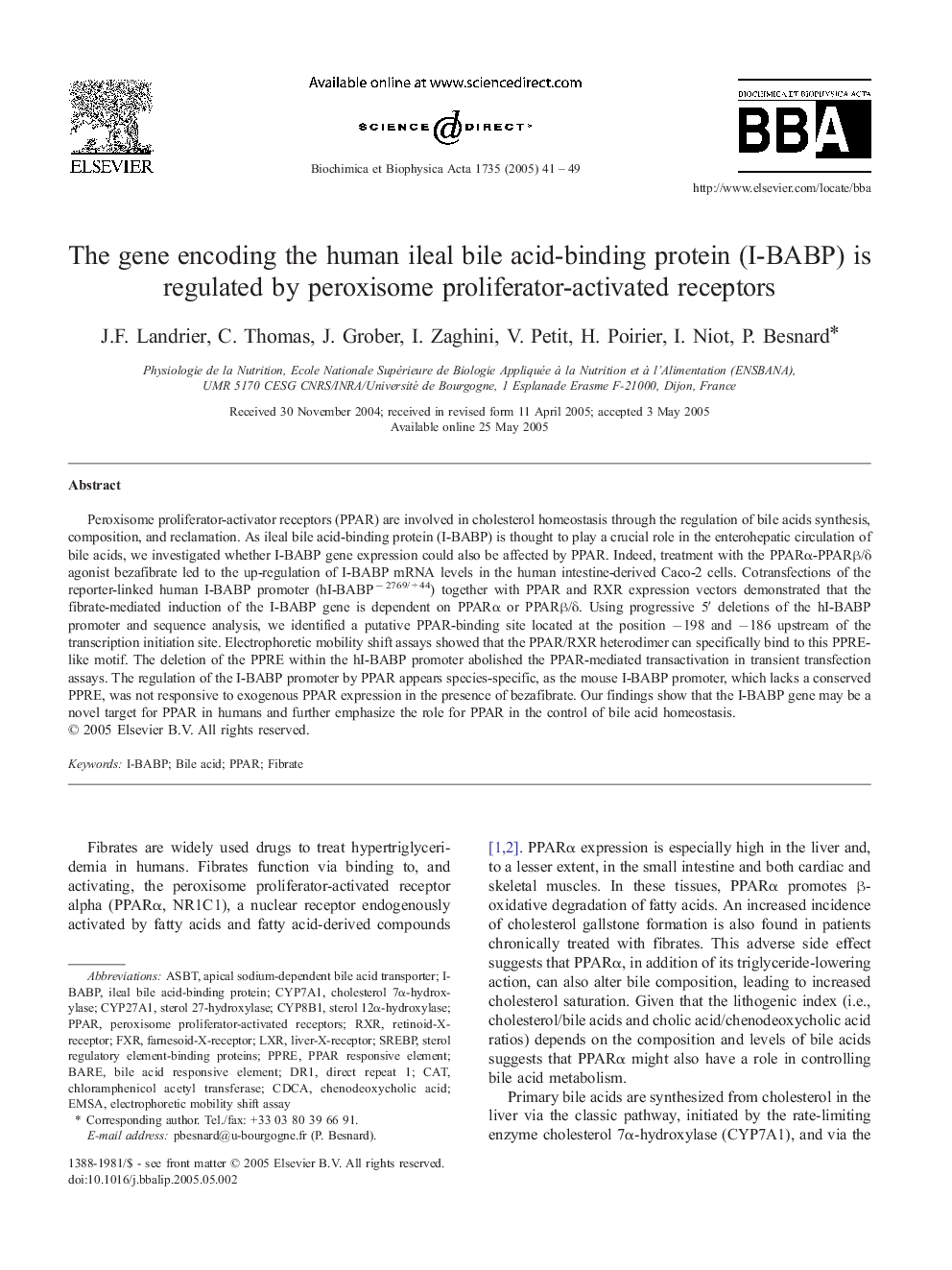| Article ID | Journal | Published Year | Pages | File Type |
|---|---|---|---|---|
| 9886547 | Biochimica et Biophysica Acta (BBA) - Molecular and Cell Biology of Lipids | 2005 | 9 Pages |
Abstract
Peroxisome proliferator-activator receptors (PPAR) are involved in cholesterol homeostasis through the regulation of bile acids synthesis, composition, and reclamation. As ileal bile acid-binding protein (I-BABP) is thought to play a crucial role in the enterohepatic circulation of bile acids, we investigated whether I-BABP gene expression could also be affected by PPAR. Indeed, treatment with the PPARα-PPARβ/δ agonist bezafibrate led to the up-regulation of I-BABP mRNA levels in the human intestine-derived Caco-2 cells. Cotransfections of the reporter-linked human I-BABP promoter (hI-BABPâ2769/+44) together with PPAR and RXR expression vectors demonstrated that the fibrate-mediated induction of the I-BABP gene is dependent on PPARα or PPARβ/δ. Using progressive 5â² deletions of the hI-BABP promoter and sequence analysis, we identified a putative PPAR-binding site located at the position â198 and â186 upstream of the transcription initiation site. Electrophoretic mobility shift assays showed that the PPAR/RXR heterodimer can specifically bind to this PPRE-like motif. The deletion of the PPRE within the hI-BABP promoter abolished the PPAR-mediated transactivation in transient transfection assays. The regulation of the I-BABP promoter by PPAR appears species-specific, as the mouse I-BABP promoter, which lacks a conserved PPRE, was not responsive to exogenous PPAR expression in the presence of bezafibrate. Our findings show that the I-BABP gene may be a novel target for PPAR in humans and further emphasize the role for PPAR in the control of bile acid homeostasis.
Keywords
Direct Repeat 1EMSABareileal bile acid-binding proteinI-BABPRetinoid-X-receptorfarnesoid-x-receptorCYP8B1liver-X-receptorCYP27A1CYP7A1DR1SREBPCATPPARRXRCDCAFXRLXRAsbtElectrophoretic mobility shift assayPPREsterol 12α-hydroxylasesterol 27-hydroxylaseChenodeoxycholic acidBile acidapical sodium-dependent bile acid transporterFibratesterol regulatory element-binding proteinschloramphenicol acetyl transferasecholesterol 7α-hydroxylasePeroxisome proliferator-activated receptors
Related Topics
Life Sciences
Biochemistry, Genetics and Molecular Biology
Biochemistry
Authors
J.F. Landrier, C. Thomas, J. Grober, I. Zaghini, V. Petit, H. Poirier, I. Niot, P. Besnard,
